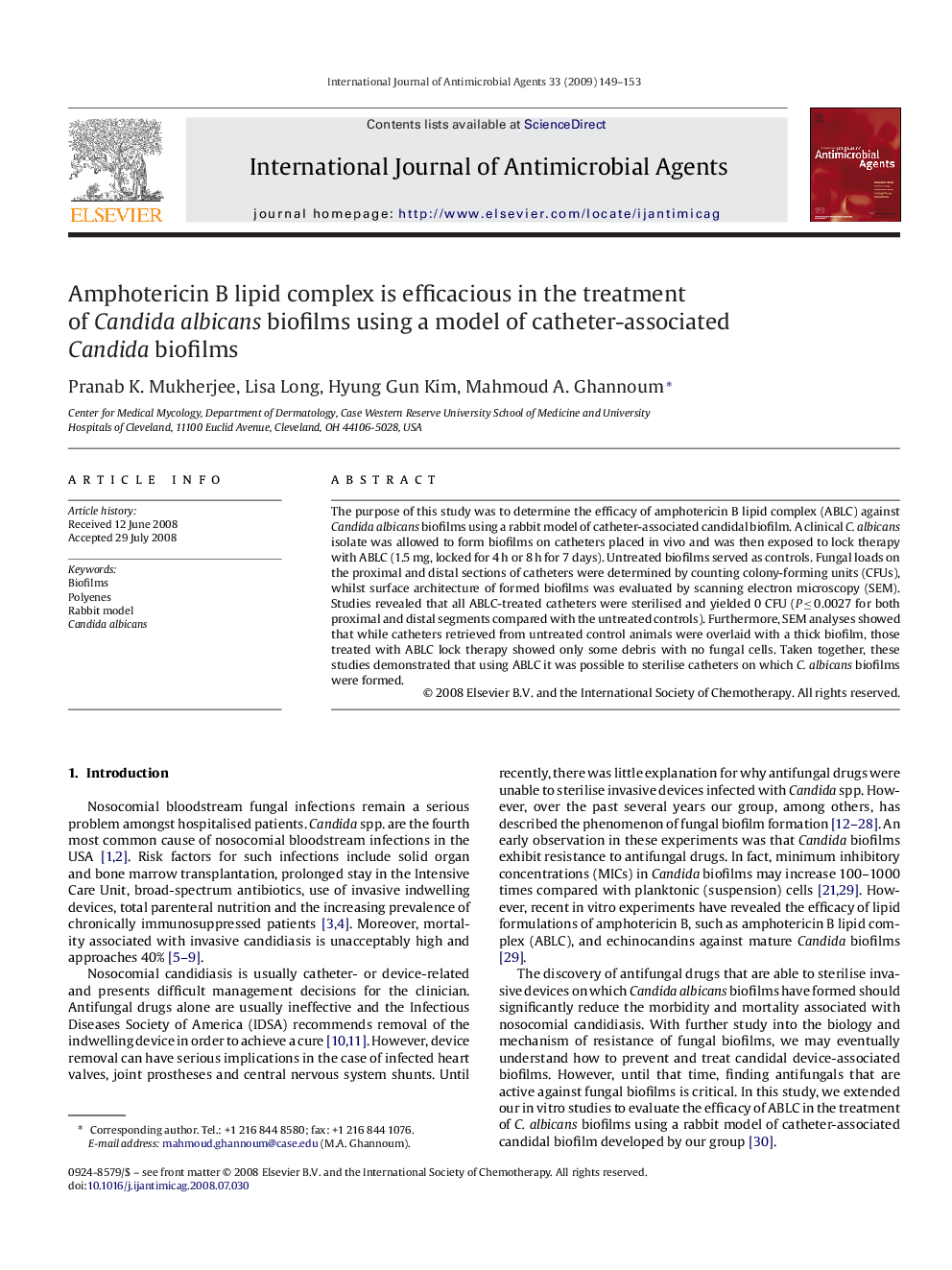| Article ID | Journal | Published Year | Pages | File Type |
|---|---|---|---|---|
| 3360493 | International Journal of Antimicrobial Agents | 2009 | 5 Pages |
The purpose of this study was to determine the efficacy of amphotericin B lipid complex (ABLC) against Candida albicans biofilms using a rabbit model of catheter-associated candidal biofilm. A clinical C. albicans isolate was allowed to form biofilms on catheters placed in vivo and was then exposed to lock therapy with ABLC (1.5 mg, locked for 4 h or 8 h for 7 days). Untreated biofilms served as controls. Fungal loads on the proximal and distal sections of catheters were determined by counting colony-forming units (CFUs), whilst surface architecture of formed biofilms was evaluated by scanning electron microscopy (SEM). Studies revealed that all ABLC-treated catheters were sterilised and yielded 0 CFU (P ≤ 0.0027 for both proximal and distal segments compared with the untreated controls). Furthermore, SEM analyses showed that while catheters retrieved from untreated control animals were overlaid with a thick biofilm, those treated with ABLC lock therapy showed only some debris with no fungal cells. Taken together, these studies demonstrated that using ABLC it was possible to sterilise catheters on which C. albicans biofilms were formed.
